vs.
Archived Posts from this Category
Archived Posts from this Category
Posted by ben on 08 Jan 2010 | Tagged as: conceptual art, video/film, vs., wordy
Conway’s Game of Life translated into one line of APL.
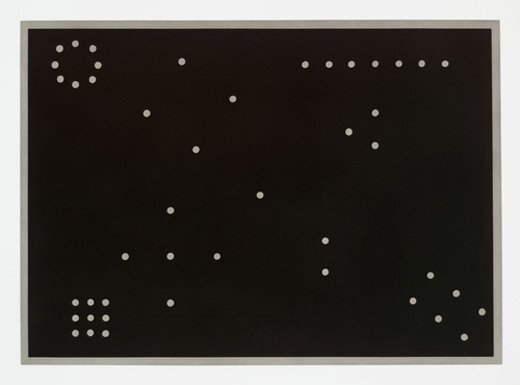
“Rules of Inference” by Mel Bochner
Posted by aaron on 28 Jan 2009 | Tagged as: music, performance art, r.i.p., vs.
I hope Ben doesn’t mind me borrowing his trademark vs. trope, but I couldn’t resist posting these images. Levitate over them for deeper enlightenment.

Pocket trumpet master and frequent Ornette Coleman collaborator Don Cherry.

Magical TM devotee and 1970's teevee phenomenon Doug Henning.
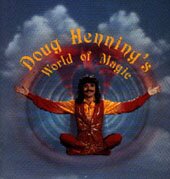
Bonus levitation.
Posted by justin on 11 Nov 2008 | Tagged as: art paparazzi, party photos, performance art, possibilities, responses/reviews, vs.
Heres a short visual account of the opening affair at Artpace last Thursday night. Richie Budd’s pounding geriatric light show mixed with Taryn Simon’s noise-sensitive Cuttlefish made for an interesting experience..
(Lu Chunsheng’s work, also opened that night, is not pictured).

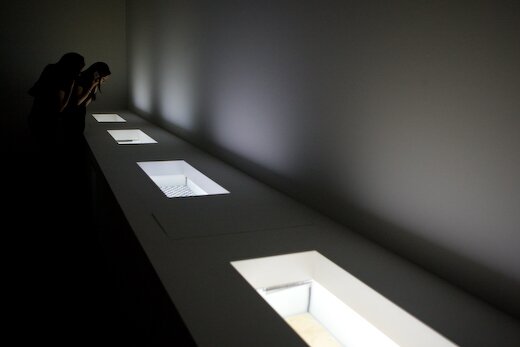
(follow the link for more photos and video of Richie Budd sculpture in action)
Posted by ben on 07 Nov 2008 | Tagged as: image & sound, music, vs.
It can be performed by any kind and number of instruments or voices. Only one instrument must play ad libitum the series with the last three or four notes (right) at random, but returning always to A flat. All other instruments and voices can be well tuned or fluctuate within a very small interval above and below the notes frequency of the instrument playing ad libitum: they can’t play more than five notes of the series for each performance.
— Roberto Donnini, instructions for Tunedless, 1977
The first drafter draws a not straight vertical line as long as possible. The second drafter draws a line next to the first one, trying to copy it. The third drafter does the same, as do as many drafters as possible. Then the first drafter, followed by the others, copies the last line drawn until both ends of the wall are reached.
— Sol LeWitt, instructions for Wall Drawing #123: Copied Lines, 1972
[Cross-posted at Scattered Work]
Posted by justin on 05 Nov 2008 | Tagged as: adventure day, announcements, art paparazzi, image & sound, in yo face, vs.
Posted by ben on 01 Aug 2008 | Tagged as: books, graffiti, outsider, poetry, vs.
There is a Jewish proverb which says that “the other’s material needs are my spiritual needs;” it is this disproportion, or asymmetry, that characterizes the ethical refusal of the first truth of ontology–the struggle to be.
… The ethical situation is a human situation, beyond human nature, in which the idea of God comes to mind. In this respect, we could say that God is the other who turns our nature inside out, who calls our ontological will-to-be into question.
Jesus
Others
You!
Posted by ben on 14 Apr 2008 | Tagged as: acquisitions, borders, vs.
“Art and money never touch. They exist in parallel universes of value at comparable levels of cultural generalization: Art does nothing to money but translate it. Money does nothing to art but facilitate its dissemination and buy the occasional bowl of Wheaties for an artist or art dealer. Thus, when you trade a piece of green paper with a picture on it, signed by a bureaucrat, for a piece of white paper with a picture on it, signed by an artist, you haven’t bought anything, since neither piece of paper is worth anything. You have translated your investment and your faith from one universe of value to another.” — Dave Hickey, Dealing
“According to this system, bodies act as if there were no souls (though this is impossible); and souls act as if there were no bodies; and both act as if each influenced the other.” — G.W. Leibniz, The Principles of Philosophy, or, the Monadology
Posted by justin on 24 Feb 2008 | Tagged as: adventure day, art paparazzi, mustaches, party photos, performance art, possibilities, rumors, silliness, sneak peeks, vs.
Posted by ben on 22 Feb 2008 | Tagged as: performance art, video/film, vs.
Bruce Nauman, Walking in an Exagerated Manner around the Perimeter of a Square (1967-68)
Monty Python, The Ministry of Silly Walks (1970)
Posted by ben on 13 Feb 2008 | Tagged as: books, borders, vs.

The New York Earth Room by Walter de Maria
Cities & The Dead
What makes Argia different from other cities is that it has earth instead of air. The streets are completely filled with dirt, clay packs the rooms to the ceiling, on every stair another stairway is set in negative, over the roofs of the houses hang layers of rocky terrain like skies with clouds. We do not know if the inhabitants can move about the city, widening the worm tunnels and the crevices where roots twist: the dampness destroys people’s bodies, and they have scant strength; everyone is better off remaining still, prone; anyway, it is dark.
From up here, nothing of Argia can be seen; some say “It’s down below there,” and we can only believe them. The place is deserted. At night, putting your ear to the ground, you can sometimes hear a door slam.
— Italo Calvino, (trans. William Weaver)
Posted by ben on 02 Feb 2008 | Tagged as: vs.

Portrait d’une jeune fille américaine dans l’état de nudité (Portrait of a Young American Girl in the State of Nudity) by Francis Picabia (Published in the magazine 291 in 1915)
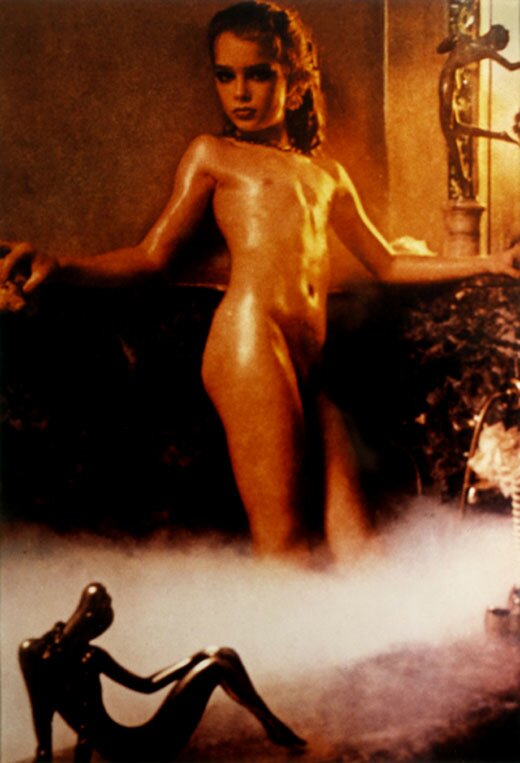
Spiritual America by Richard Prince (1983)
Posted by ben on 27 Jan 2008 | Tagged as: photography, vs.
The photographic archives surrounding two iconic war images have recently been discovered. In December of 2006, the Wall Street Journal tracked down the anonymous photographer of a Pulitzer-winning photograph of a 1979 execution in Iran. Now we learn that a suitcase full of negatives by Robert Capa of the Spanish Civil War have been discovered in Mexico City.
These two images have kept people searching for decades, trying to the find the stories behind the photos:

1979 Iranian Execution by Jahangir Razmi
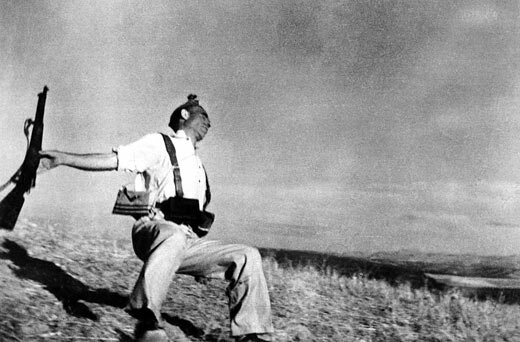
The Falling Soldier by Robert Capa (Spanish Civil War)
Posted by ben on 17 Jan 2008 | Tagged as: in yo face, tattoo, vs.
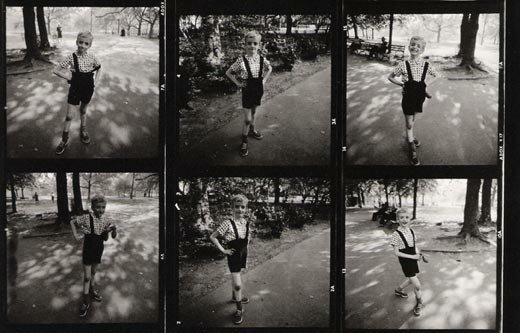
Contact Sheet of Child with a Toy Hand Grenade in Central Park by Diane Arbus, 1962 (Detail — full image here)
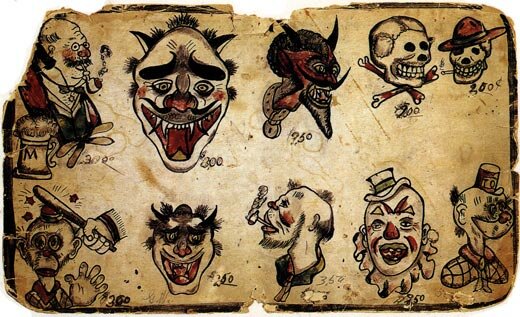
Tattoo flash sheet by Gus Wagner, ca. 1900 (via )
Posted by ben on 16 Jan 2008 | Tagged as: in yo face, vs.
Posted by ben on 14 Dec 2007 | Tagged as: books, essays, vs., wordy
“Prosaically, lunk-literal-mindedly, I’ve wondered to what extent Pollock was being subliminally influenced by the color images of telescopic deep space suddenly proliferating in all the popularizing magazines and books and movies of the period. And, too, I’ve wondered about the human scale — the place of the human in the unfolding drama. Standing before such paintings, I can get to feeling positively infinitesimal (less than minuscule, a merest speck, utterly, in Greenberg’s phrase, “beside the point”); or, alternatively, as my eyes sweep the canvas and my mind identifies, momentarily, with the glory of the painting’s making, I can get to feeling almost godlike. One is reminded of the various self-dramatizing films of Pollock around the time he was making those paintings — a Colossus striding purposefully from side to side, pausing, stabbing, hurling the universe itself into existence.” — Lawrence Weschler,
“Henceforth, when man is for once overcome by the horror of alienation and the world fills him with anxiety, he looks up (right or left, as the case may be) and sees a picture. Then he sees that the I is contained in the world, and that there really is no I, and thus the world cannot harm the I, and he calms down; or he sees that the world is contained in the I and that there really is no world, and thus the world cannot harm the I, and he calms down. And when man is overcome again by the horror of alienation and the I fills him with anxiety, he looks up and sees a picture; and whichever he sees, it does not matter, either the empty I is stuffed full of world or it is submerged in the flood of the world, and he calms down.
“But the moment will come, and it is near, when man, overcome by horror, looks up and in a flash sees both pictures at once. And he is seized by a deeper horror.” — Martin Buber,
Posted by ben on 20 Aug 2007 | Tagged as: design, essays, vs.
“It should be clear that in the applied arts, innovation is not an unceasing hunt for heterodox and unseen things from desert islands; it is not merely an image surgery soliciting the senses, or a tension tickling the nerves. The idea of seeking the new for the sake of being different is nonsensical, resulting from the prevailing contemporary ‘market and goods’ ideology. True innovation is one that is rightly able to link the adaptive history embodied in any artifact with the changes of production tools, whenever they occur.” — Sergio Polano, Emigre 26
“But these forward gropings, this anticipation of an undefined future and the cult of the new mean in fact the exaltation of the present. The new time consciousness, which enters philosophy in the writings of Bergson, does more than express the experience of mobility in society, of acceleration in history, of discontinuity in everyday life. The new value placed on the transitory, the elusive and the ephemeral, the very celebration of dynamism, discloses a longing for an undefiled, immaculate and stable present.” — Jürgen Habermas, “Modernity – An Incomplete Project”